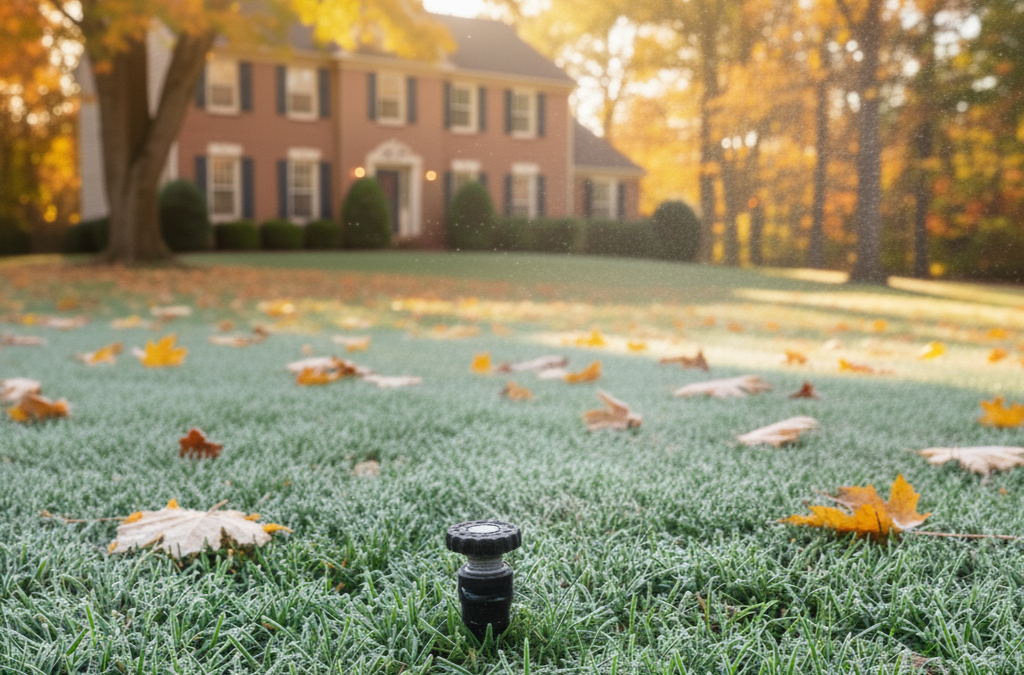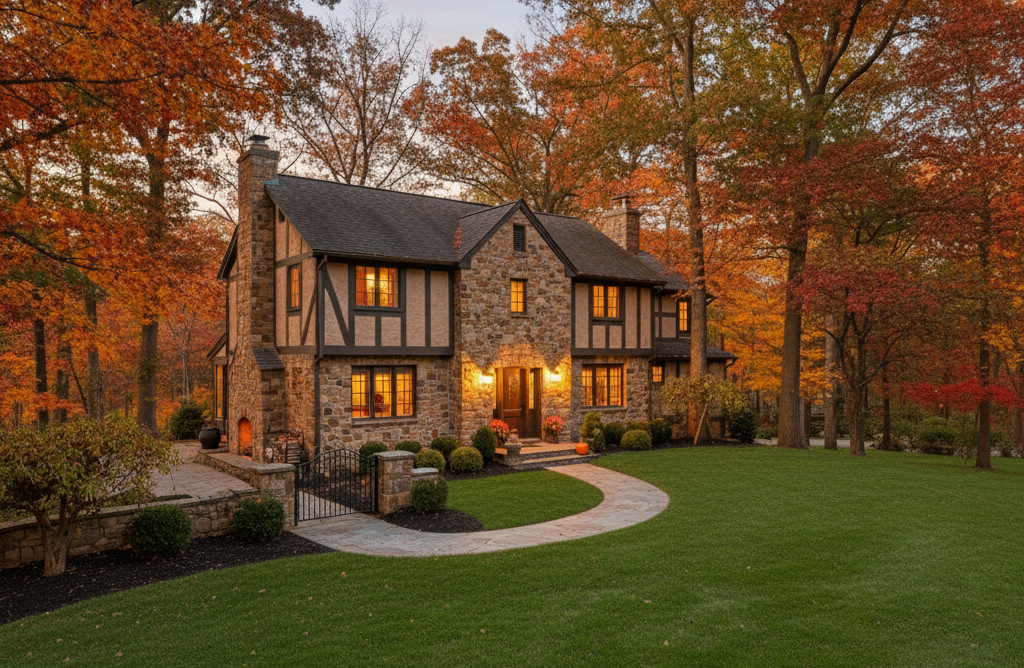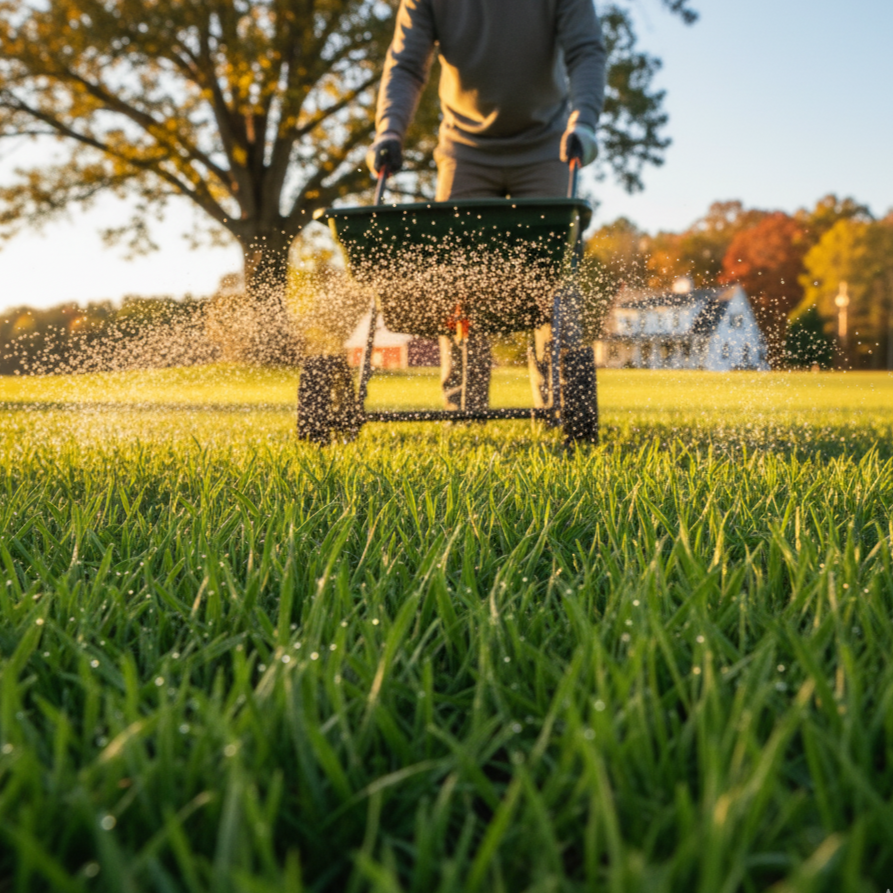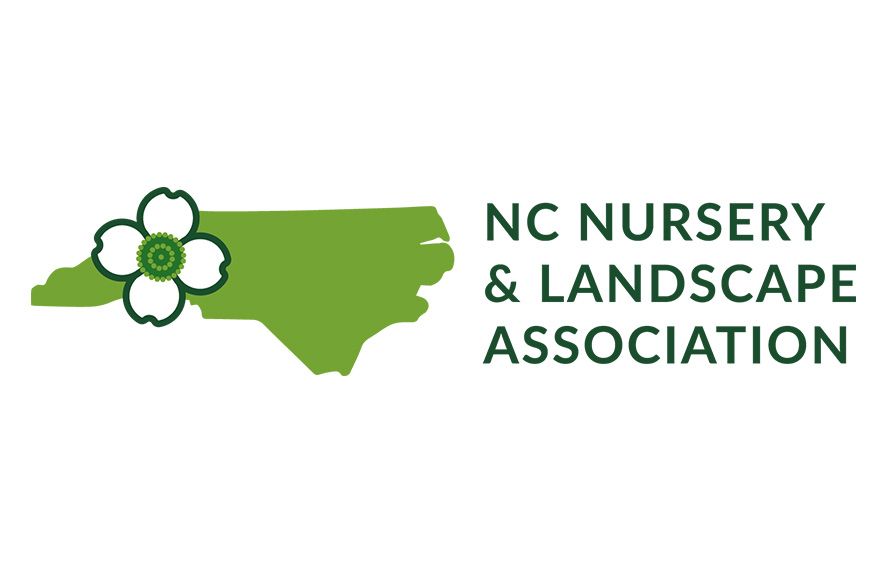Protect your system now — and avoid costly spring repairs later
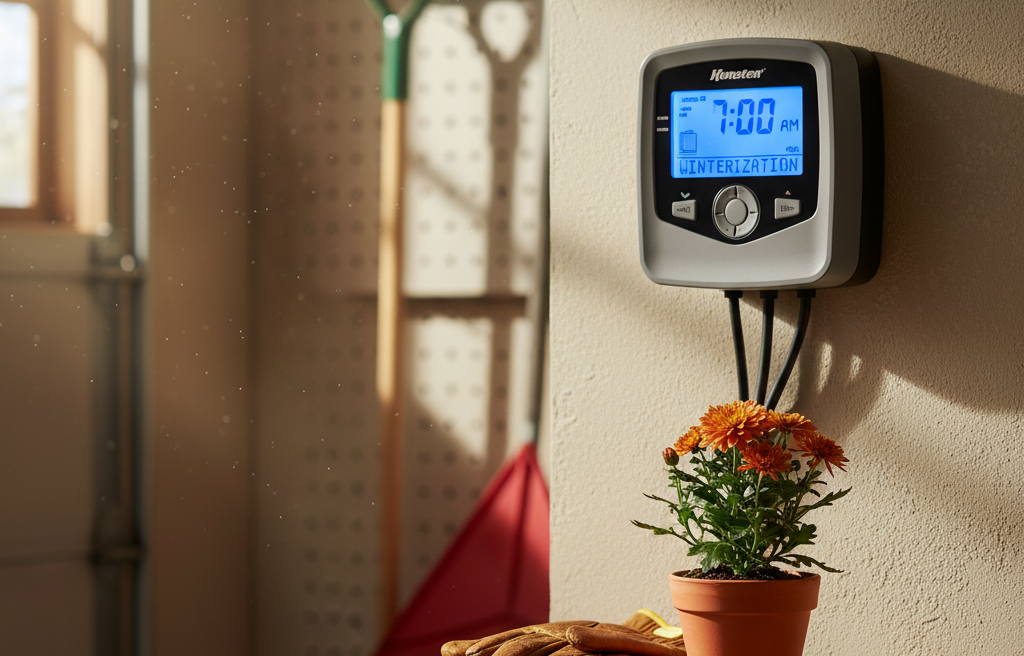
As North Carolina’s fall weather begins to shift toward colder nights and shorter days, homeowners often focus on raking leaves or fertilizing their lawns. But one critical step often gets overlooked until it’s too late — irrigation winterization. While it may seem like a minor detail, preparing your irrigation system before the first freeze is one of the smartest financial moves you can make for your home and landscape.
When temperatures drop, even briefly, the water left inside irrigation lines, backflow preventers, and valves can freeze and expand. That expansion puts tremendous pressure on pipes and fittings, often causing cracks that won’t reveal themselves until spring. By the time you turn the system back on, those hidden fractures can result in leaks, wasted water, and costly repairs. What could’ve been a simple fall service becomes a spring headache worth hundreds — or even thousands — of dollars.
At Green Garden Landscaping, we see it every year: homeowners skipping winterization in mild autumns, assuming they’ll have time later, only to face major irrigation damage after the first cold snap. The truth is simple — a small investment now prevents big expenses later.
The Real Cost of Skipping Winterization
Most homeowners underestimate how much damage a single night of freezing temperatures can cause. When water freezes inside PVC or polyethylene irrigation lines, it expands by nearly 10%. That pressure can split pipes underground or crack fittings where they connect. Because much of your irrigation system is buried, these breaks often go unnoticed until warmer months when you reactivate the system.
Imagine stepping into spring ready to start watering, only to find your lawn flooding or zones refusing to turn on. At that point, you’re not just dealing with inconvenience — you’re facing repairs that can easily reach into the hundreds or thousands of dollars.
A cracked backflow preventer alone can cost more than replacing an entire household appliance. Leaking valves, broken sprinkler heads, and fractured pipes each add to the bill. What would have been a quick $100–$150 winterization service can balloon into $800 or more in repairs, not counting the wasted time and water once the system starts leaking underground.
These aren’t rare cases; they’re the most common spring repair calls across North Carolina. Frozen components are a silent threat — they don’t fail immediately but weaken over time, eventually leading to larger system breakdowns that reduce water efficiency and raise your utility costs.

Why Professional Winterization Pays Off
With online tutorials everywhere, it can be tempting to attempt irrigation winterization yourself. But while DIY methods might seem straightforward, they often leave residual water in parts of the system you can’t easily access. Home air compressors rarely produce the right volume or pressure to clear out water effectively — and using too much pressure can actually cause damage.
Professional winterization, on the other hand, uses specialized tools, techniques, and experience to ensure every line, valve, and sprinkler head is cleared safely. The process begins with a full inspection of the irrigation system. Technicians check the controller, valves, and visible lines for leaks, ensuring no existing damage goes unnoticed before the system is powered down.
Once the inspection is complete, the technician adjusts the irrigation controller — typically switching it to “rain mode” or shutting it off entirely. This step prevents accidental activation during the winter while preserving your programming for spring startup.
Next, the main water supply is shut off at the source, usually near the backflow preventer or mainline. From there, the most crucial step begins — draining or blowing out the lines. This involves removing every drop of water trapped inside pipes, sprinkler heads, and valves. Depending on your system, this can be done manually, automatically through built-in valves, or with a controlled compressed air “blowout” method.
A trained irrigation specialist regulates air pressure — usually between 50 and 80 PSI — to safely push out water without stressing the components. Home compressors simply don’t deliver enough volume, and higher-pressure units used incorrectly can rupture pipes. That’s why professional expertise is essential.
Finally, the backflow preventer — one of the system’s most vulnerable parts — is insulated to protect it from the cold. These assemblies sit above ground, where they’re fully exposed to freezing air. Without insulation, they’re often the first to crack. Once every component is cleared, the technician logs the system and tags it for easy spring reactivation.
This level of precision and protection doesn’t just prevent damage — it extends your irrigation system’s lifespan and keeps it operating efficiently for years to come.
Professional irrigation winterization typically costs less than a single pipe replacement — and can prevent hundreds of dollars in spring repairs. Think of it as seasonal insurance for your landscape investment.
Protecting More Than Just Pipes
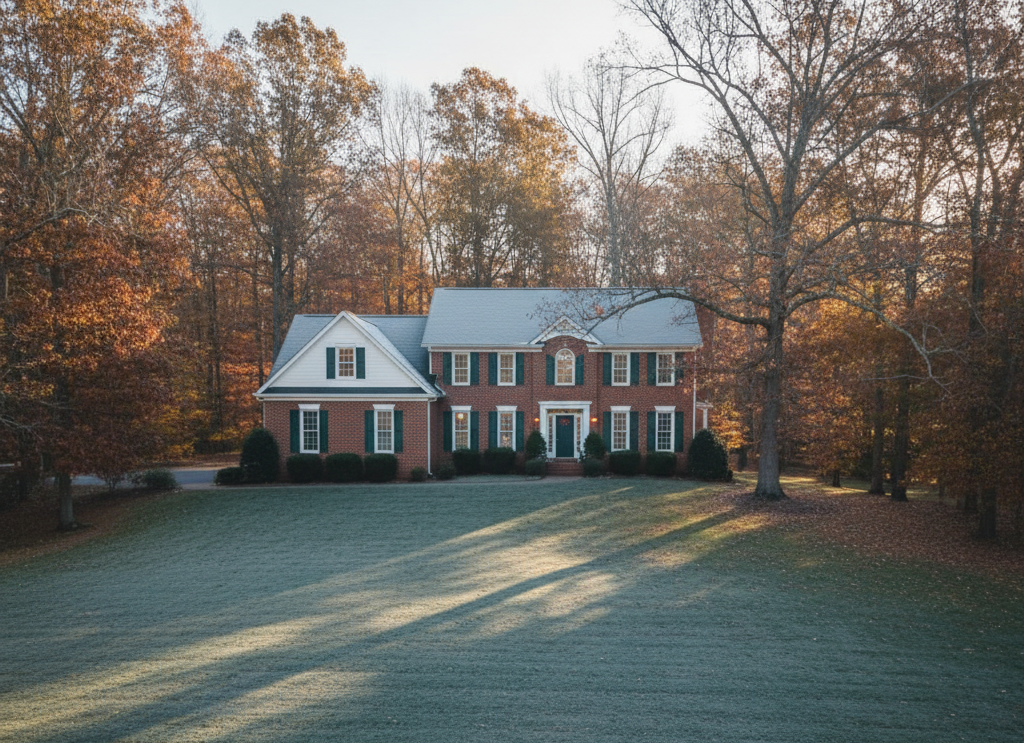
Irrigation winterization doesn’t just protect your equipment — it safeguards the health of your entire landscape. A cracked pipe or leaking valve during winter can cause water to seep into the soil, creating soggy patches and compacted areas that suffocate roots. Over time, this leads to uneven soil texture, erosion, and turf damage.
Frozen leaks can also disrupt your property’s drainage balance, allowing standing water to accumulate and freeze repeatedly. The result? Damaged grass, frost heave, and even root rot that persists into spring.
On the flip side, a properly winterized irrigation system helps maintain your lawn’s balance through the cold months. By ensuring no trapped water remains underground, the soil structure stays intact and ready for aeration, fertilization, and watering once warmer temperatures return.
A healthy spring lawn starts with careful fall preparation — and your irrigation system plays a central role in that.
The Efficiency Factor: Long-Term Savings
When you invest in winterization, you’re not just preventing immediate damage; you’re improving your irrigation system’s long-term efficiency. Over time, systems exposed to freeze-thaw cycles experience internal wear — tiny cracks, weakened seals, and debris buildup that reduce water pressure and increase utility bills.
Regular winterization eliminates that stress. By keeping your system in good shape year after year, you maintain consistent water flow and coverage. That means your sprinklers operate at their best efficiency, using less water to achieve the same results.
This efficiency translates to lower operational costs, fewer repairs, and longer-lasting components. A well-maintained irrigation system can last 15 to 20 years, while a neglected one may need partial replacement after just 7 to 10 years.
The math is simple: spend a little now, save a lot later.
Common Mistakes Homeowners Make
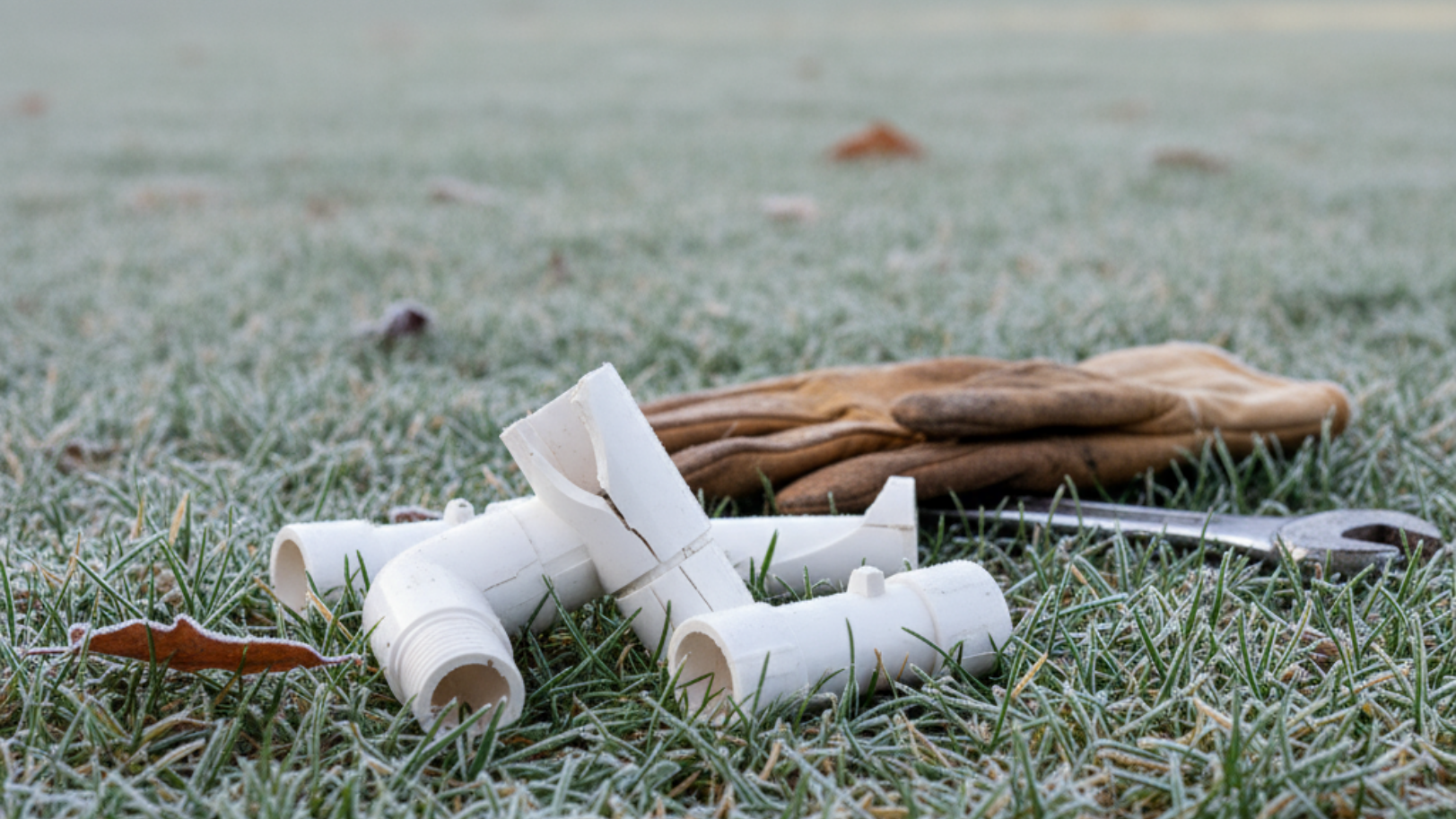
One of the biggest mistakes homeowners make is assuming that turning off the water supply is enough. Unfortunately, even with the main valve closed, residual water remains trapped in the lines and fittings. This hidden moisture expands as temperatures drop, leading to cracks and leaks that stay unnoticed until spring.
Another common issue is skipping the backflow preventer protection. Because it’s above ground, this device freezes faster than underground lines. Without proper insulation or draining, it’s often the first point of failure — and one of the most expensive to replace.
DIY blowouts can also cause more harm than good. Using a household compressor might seem practical, but these units rarely provide sufficient airflow to clear long irrigation runs. Worse, over-pressurizing the system can rupture sprinkler heads and damage seals, causing even more expensive repairs.
The best approach is to let a trained irrigation specialist handle it. Professionals know exactly how much air pressure to apply and which components require extra attention.
The Smart Way to Prepare — Bundle Your Fall Services
Smart homeowners treat winterization as part of a bigger fall maintenance plan. Combining your irrigation shutdown with other seasonal services not only saves time but also maximizes your landscape’s readiness for winter.
At Green Garden Landscaping, we recommend pairing irrigation winterization with a full fall cleanup — including leaf removal, fertilization, and aeration if needed. Removing leaves prevents soggy soil and clogged irrigation heads. Fertilizing strengthens turf roots before dormancy, ensuring your grass recovers quickly in spring. Aeration improves soil oxygenation and allows nutrients to penetrate deeply before the ground freezes.
By handling all these steps together, your lawn enters winter strong and comes back healthier, greener, and more resilient.
The Bottom Line: An Ounce of Prevention Is Worth a Thousand Dollars
Irrigation winterization might not seem urgent, but in North Carolina’s unpredictable fall weather, it’s a crucial safeguard. Every year, homeowners who take the time to prepare their systems save money, preserve efficiency, and avoid the frustration of spring repairs.
Whether your property is residential or commercial, protecting your irrigation investment now ensures that your landscape — and your budget — stay healthy all year long.
📞 Schedule Your Irrigation Winterization Today


